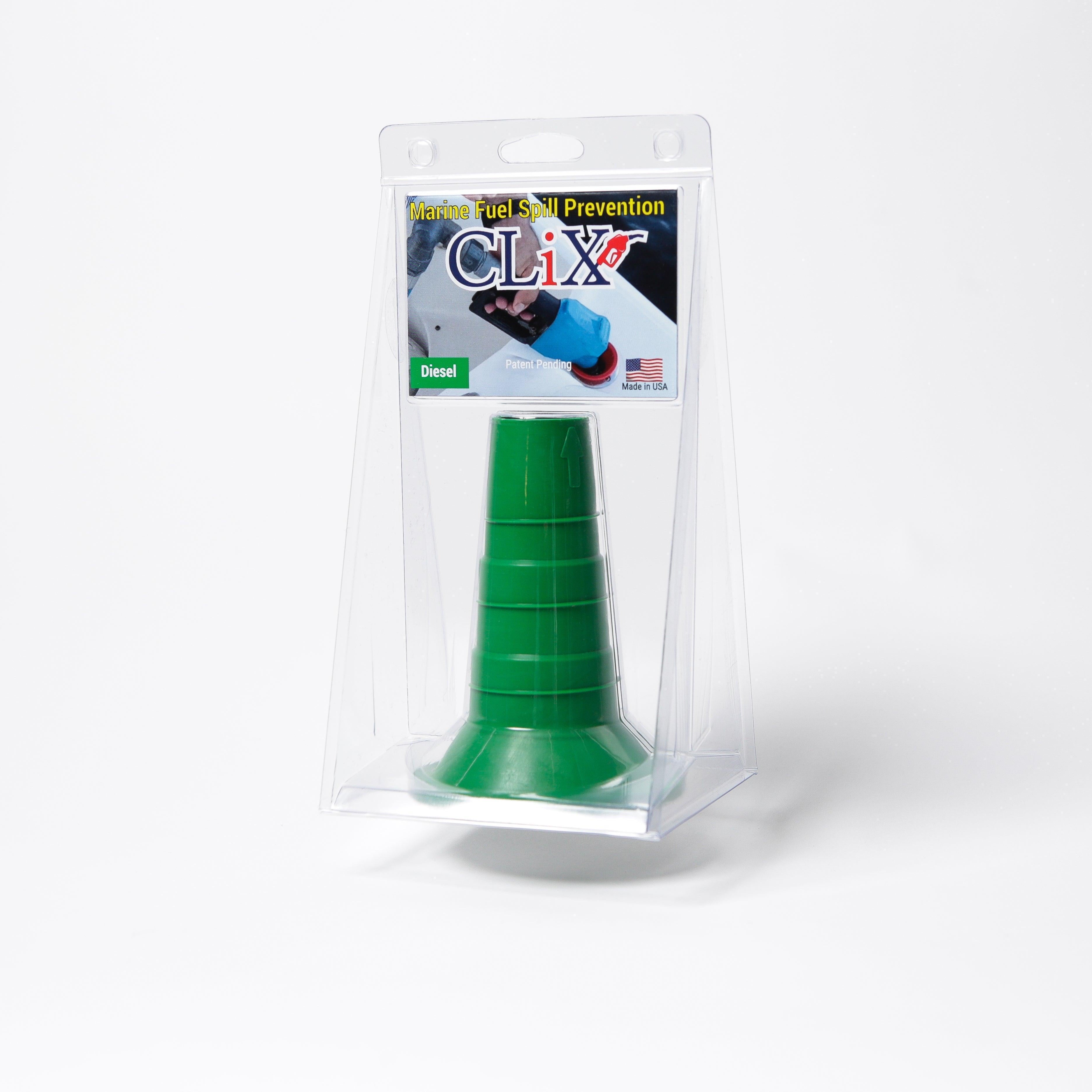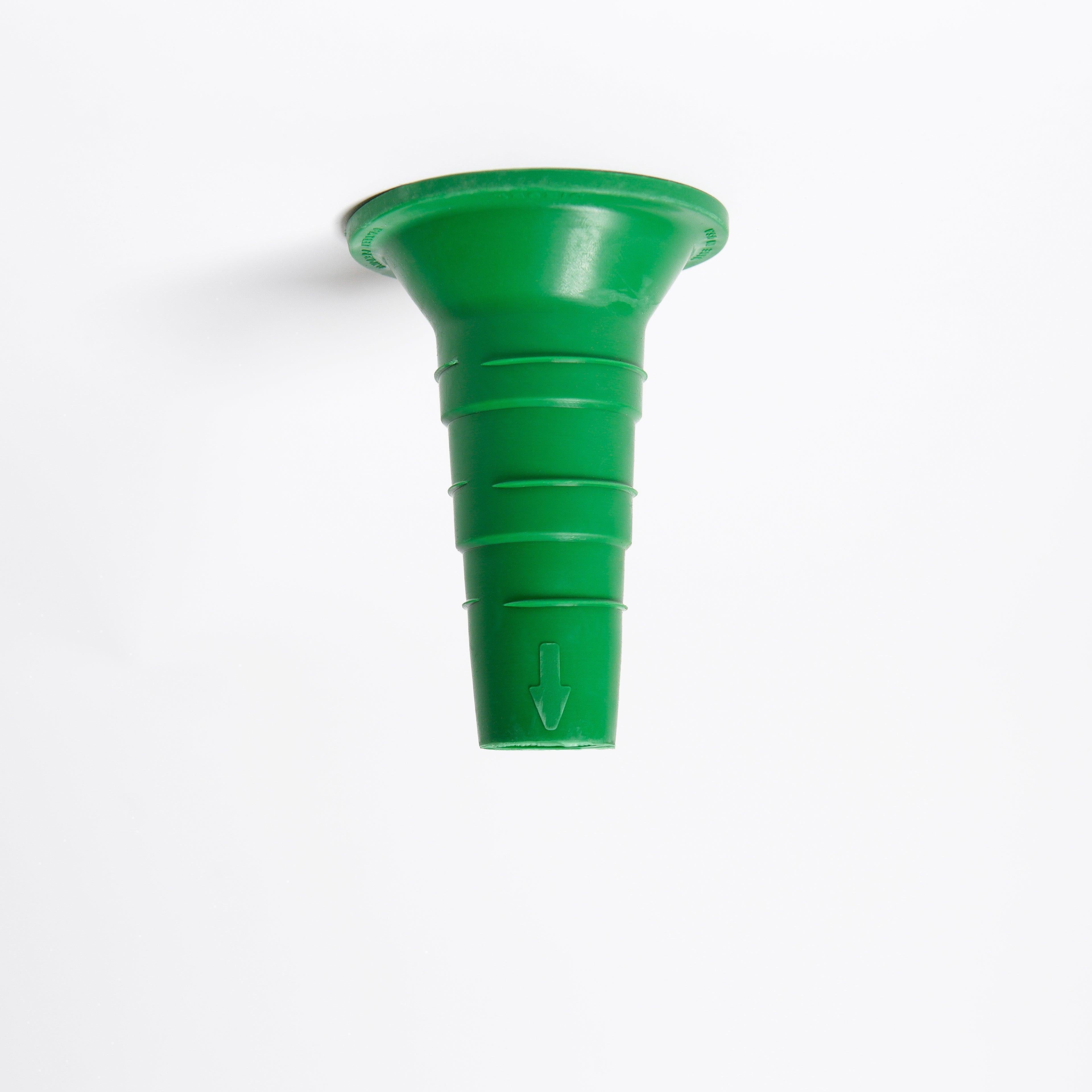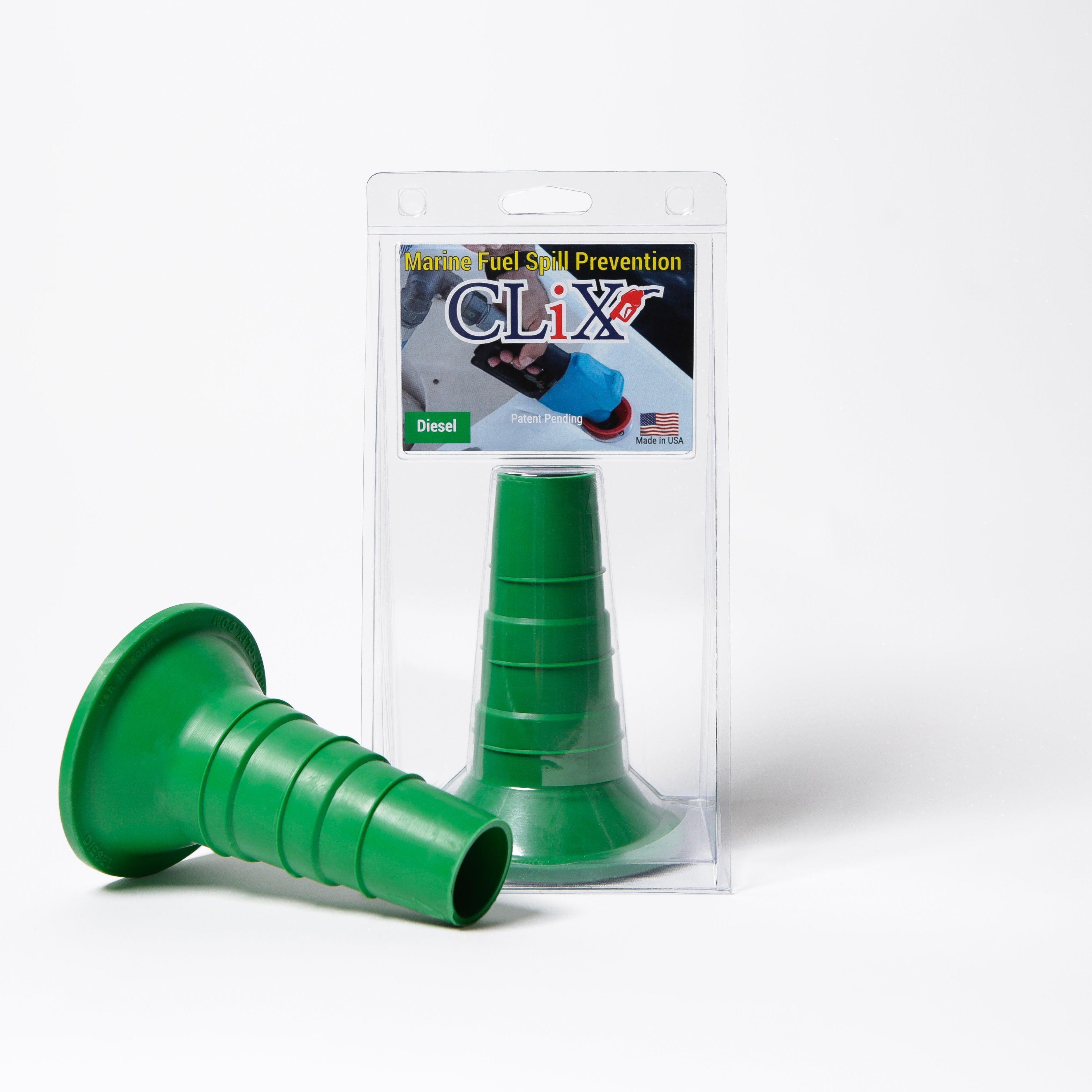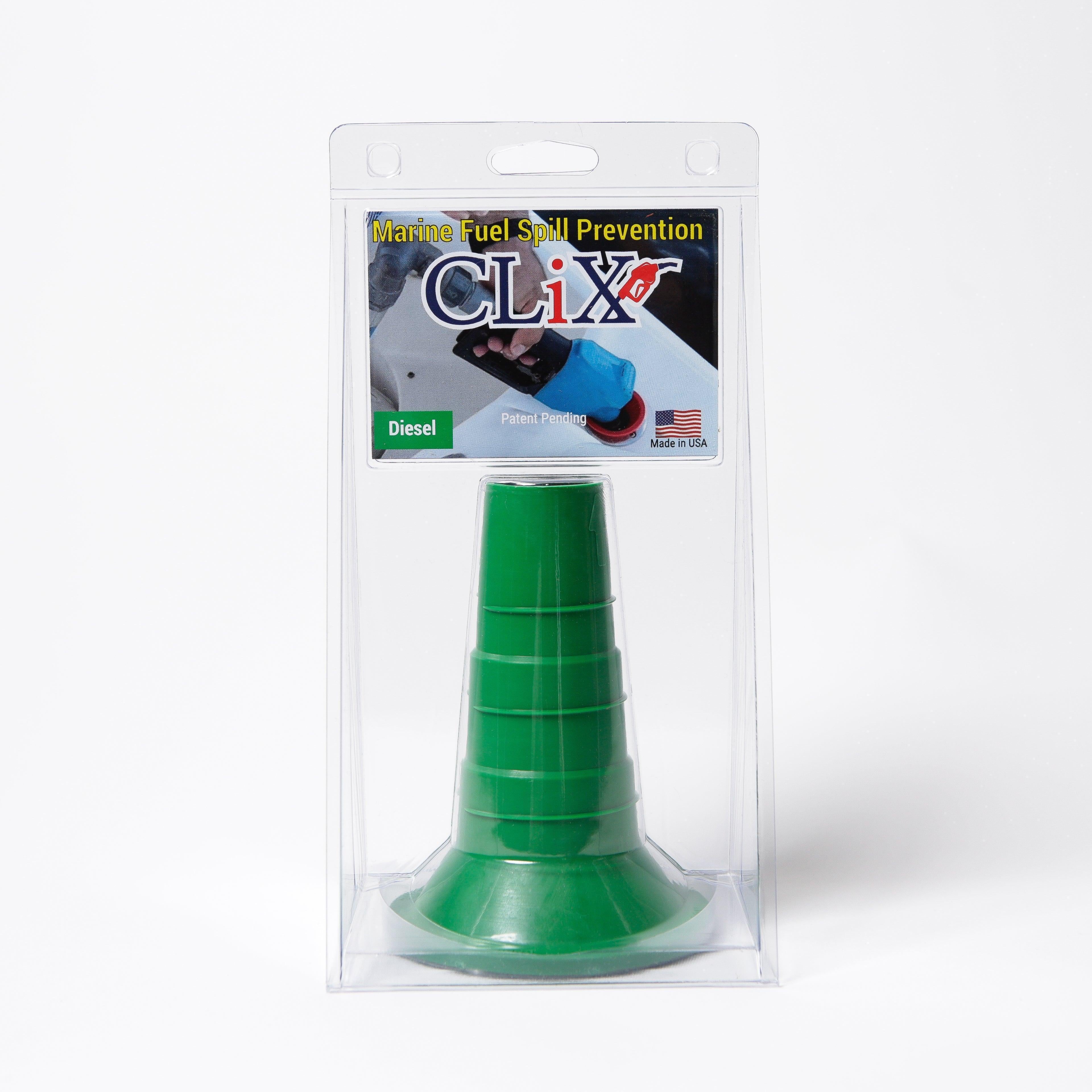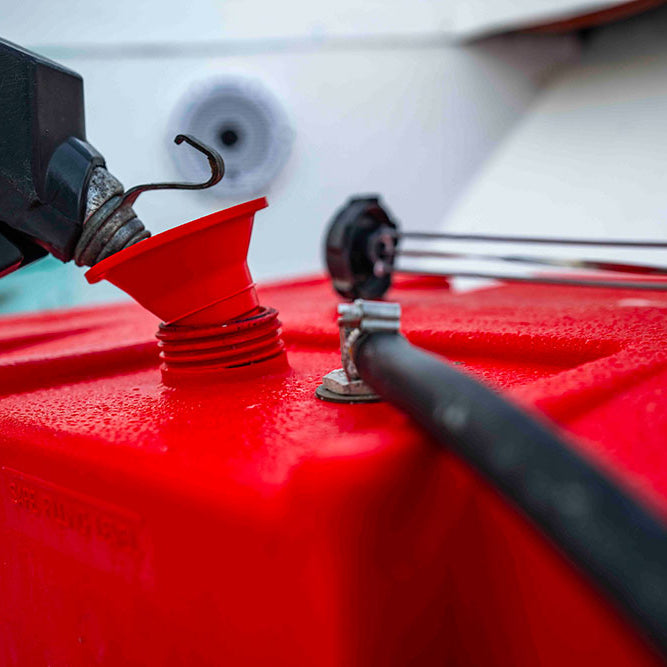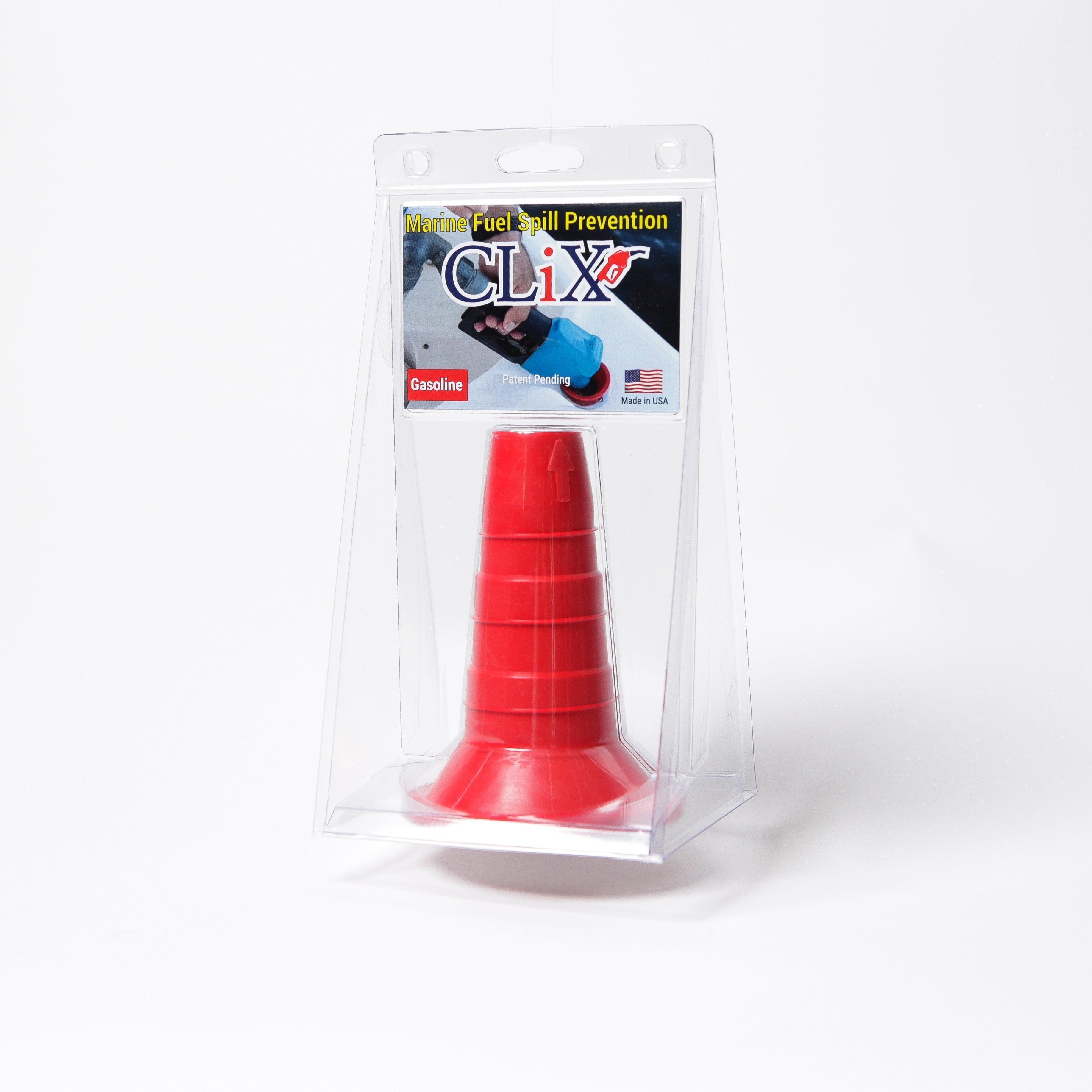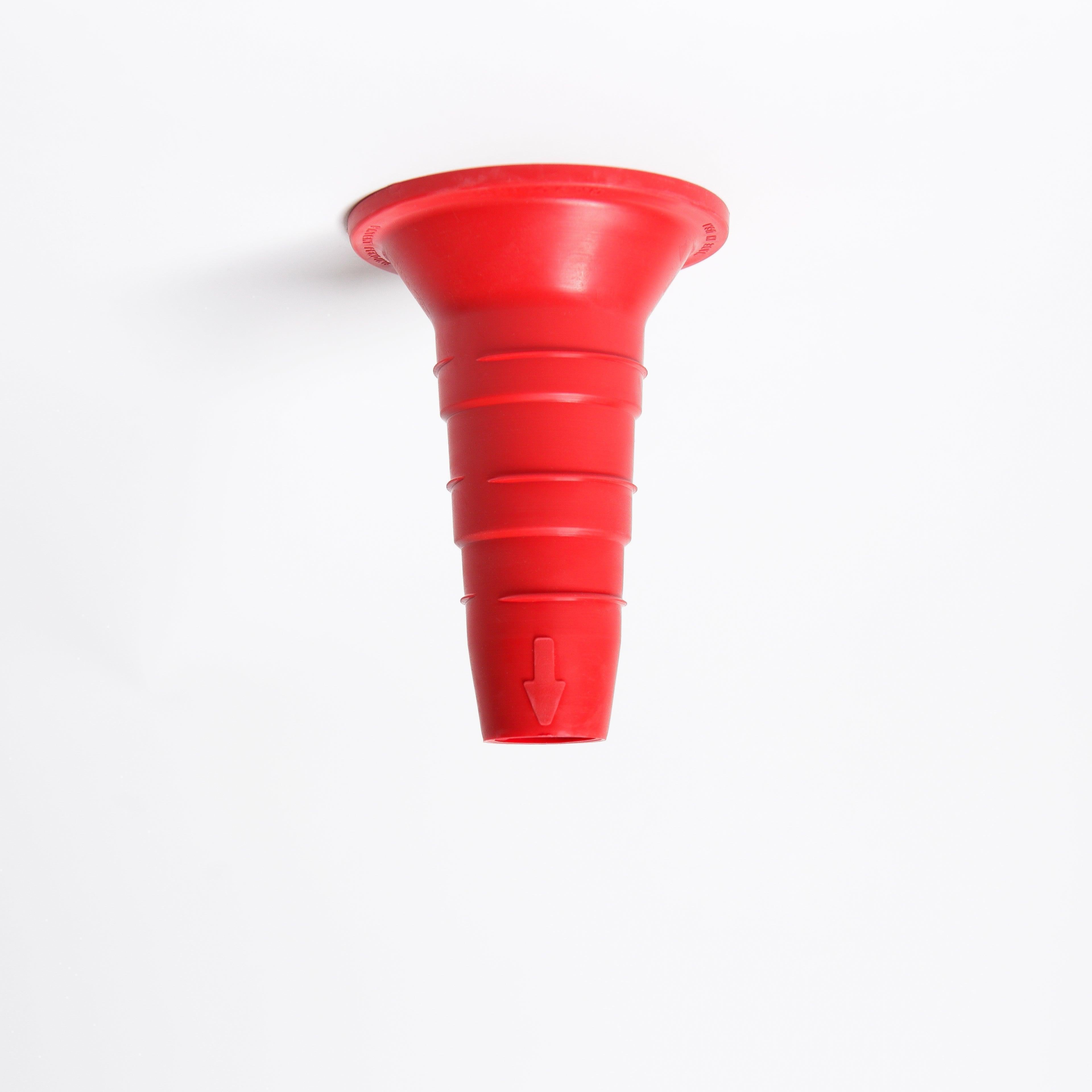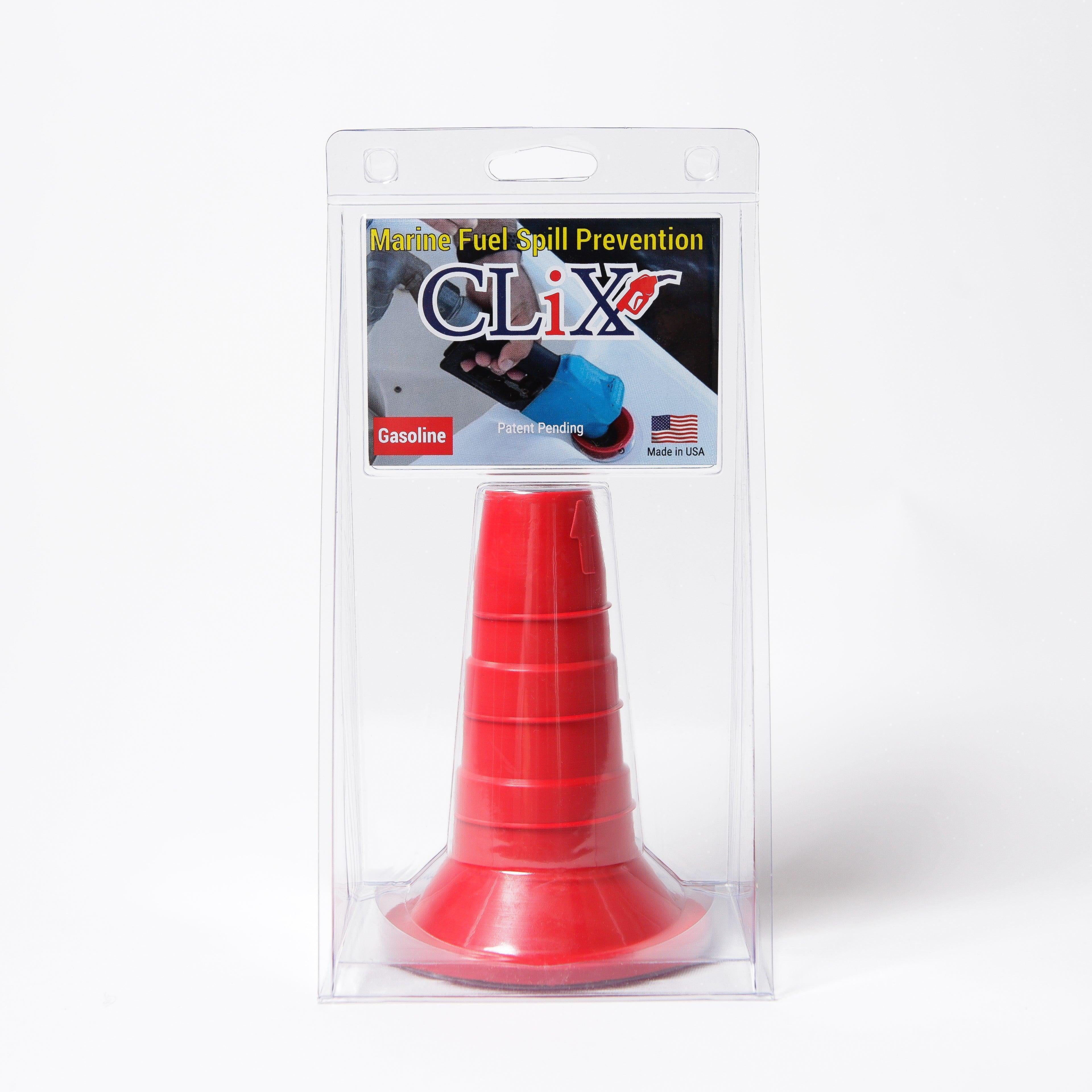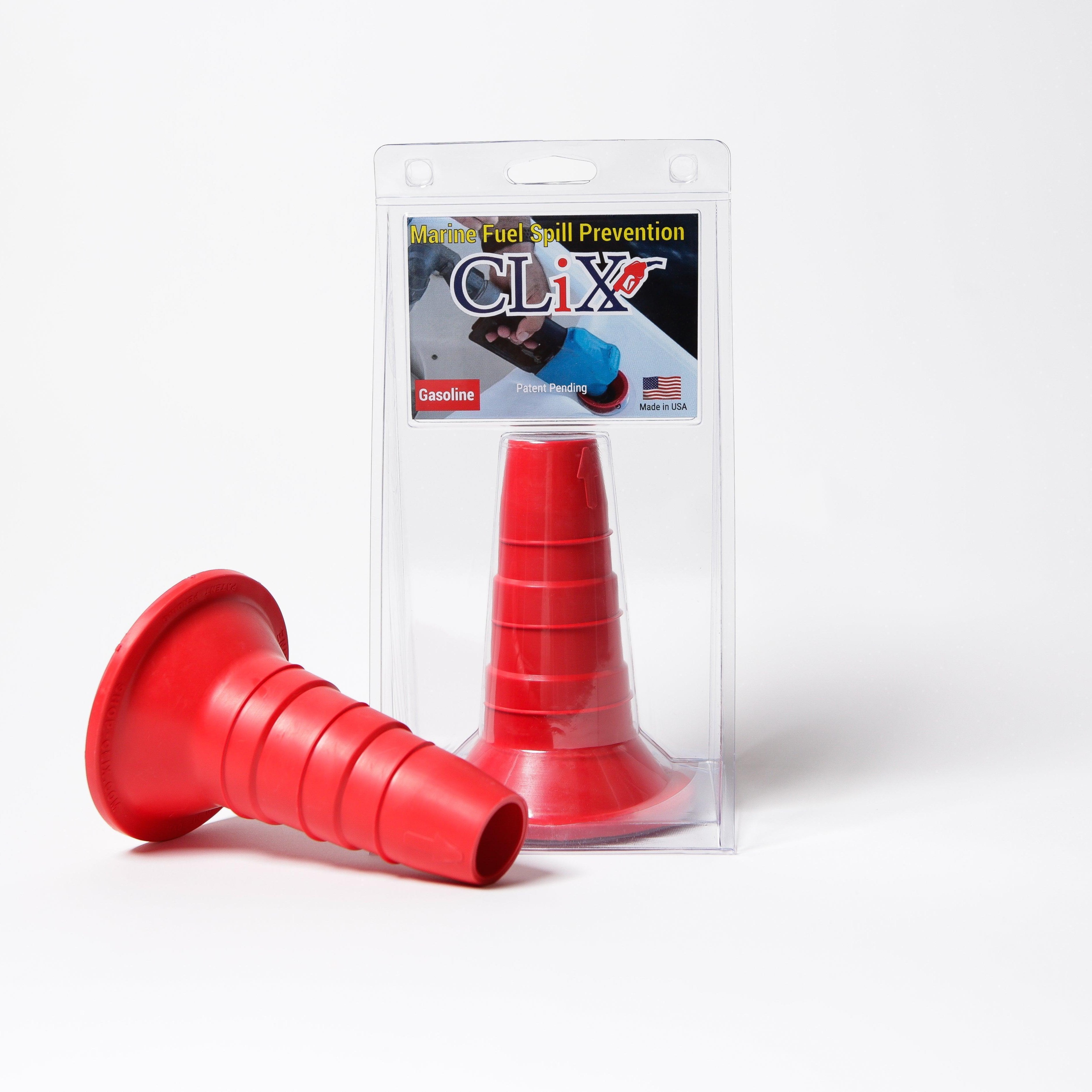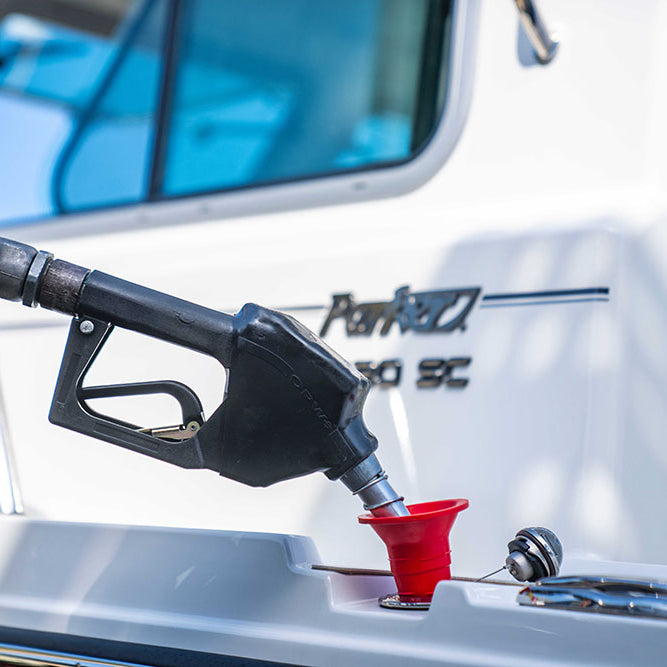A gas can with a pump isn't just another piece of gear—it's a smart upgrade to your whole boating experience. Instead of lifting and tilting a heavy container, this system uses a built-in manual or electric pump to move fuel for you. This simple change makes refueling safer, cleaner, and a whole lot easier, cutting down on the spills and back strain that come with traditional cans.
The Old Way vs. The Smart Way to Refuel Your Boat
We've all been there. You're at the dock, ready for a day on the water, but first, you have to refuel. That means wrestling with a heavy, awkward gas can, trying to pour it into a small opening while the boat bobs underneath you. It's a recipe for disaster, with fuel sloshing onto your deck, into the water, and maybe even on yourself.
Now, picture this instead: you set the gas can down on the dock, place the hose's nozzle into your boat's fuel port, and just squeeze a handle or push a button. The gas flows steadily and stops on its own when the tank is full. No lifting, no awkward balancing, and zero spills. That's the difference a gas can with a pump makes.
A Familiar Boating Problem Solved
The classic refueling struggle comes down to two things: gravity and instability. A standard gas can forces you into a clumsy dance that often leads to problems.
- Costly Spills: Spilled fuel can wreck your boat’s finish, stain the deck, and create a serious fire hazard. Even worse, just one gallon of spilled gas can contaminate up to one million gallons of water.
- Back Strain: A full 5-gallon gas can tips the scales at over 30 pounds. Hoisting that weight at an odd angle is a quick way to strain your back and shoulders.
- Wasted Time: The slow, glugging pour from an old-school can feels like it takes forever, especially when the water is calling your name.
A gas can with a pump turns refueling from a chore you dread into a quick, clean, and simple task. It’s more than just a convenience—it’s a major upgrade in safety and efficiency that solves the biggest headaches of marine refueling.
Refueling Face-Off: Traditional Can vs. Gas Can With Pump
See the clear advantages of upgrading your refueling method with this quick comparison.
| Metric | Traditional Gas Can | Gas Can With Pump |
|---|---|---|
| Spill Risk | High - requires tilting and aiming | Very Low - stable, controlled flow |
| Physical Effort | High - requires lifting over 30 lbs | Low - no lifting required |
| Refueling Speed | Slow and inconsistent "glugging" | Fast and steady flow |
| Ease of Use | Awkward and clumsy | Simple, one-person operation |
| Environmental Impact | Higher risk of water contamination | Minimal risk of spills |
The takeaway is clear: while traditional cans get the job done, a gas can with a pump offers a superior experience in every way that matters for a boater.
Exploring Different Types of Pump Gas Cans
Not all gas cans with a pump are built the same, and figuring out the differences is the key to finding the right one for your boat. It’s like picking a tool from a toolbox—you wouldn't grab a small screwdriver for a huge bolt. The same idea applies here. The models out there range from simple hand pumps to powerful electric options, each designed for a different job.
Choosing the right type really comes down to your boat's size, how often you’re fueling up, and just how much convenience you're looking for. Let’s break down the main categories so you can make a smart choice.
The Reliable Manual Siphon Pump
The simplest and usually most affordable option you'll find is the manual siphon pump. This type of gas can with a pump works on a basic principle you probably already know. It creates a pressure difference that pulls fuel out of the can, through the hose, and into your boat’s tank.
Think about using a drinking straw. When you create suction, the liquid comes right up. A manual pump works a lot like that, but instead of your mouth, you use a hand-operated bulb or a lever to get the fuel flowing. Once it starts, gravity and the siphoning action do the rest.
- Best For: Small engines on dinghies or jet skis, or as a foolproof backup on any boat.
- Pros: Super reliable because they don't need batteries or a power source. They're also lightweight and easy on the wallet.
- Cons: You have to put in a little muscle to get it started, and they're generally slower than electric models.
Battery-Operated Pumps for Effortless Fueling
If you're looking for more convenience, battery-operated pumps are a great step up. These models use small but mighty motors powered by standard batteries (like D-cells) to do all the work. Just flip a switch, and the pump starts moving fuel at a nice, steady pace.
This type gets rid of manual pumping altogether, turning refueling into a simple, one-handed task. It’s the perfect middle-ground, giving you modern convenience without needing to be plugged into anything.
This image lays out the different models to help you see how they compare.
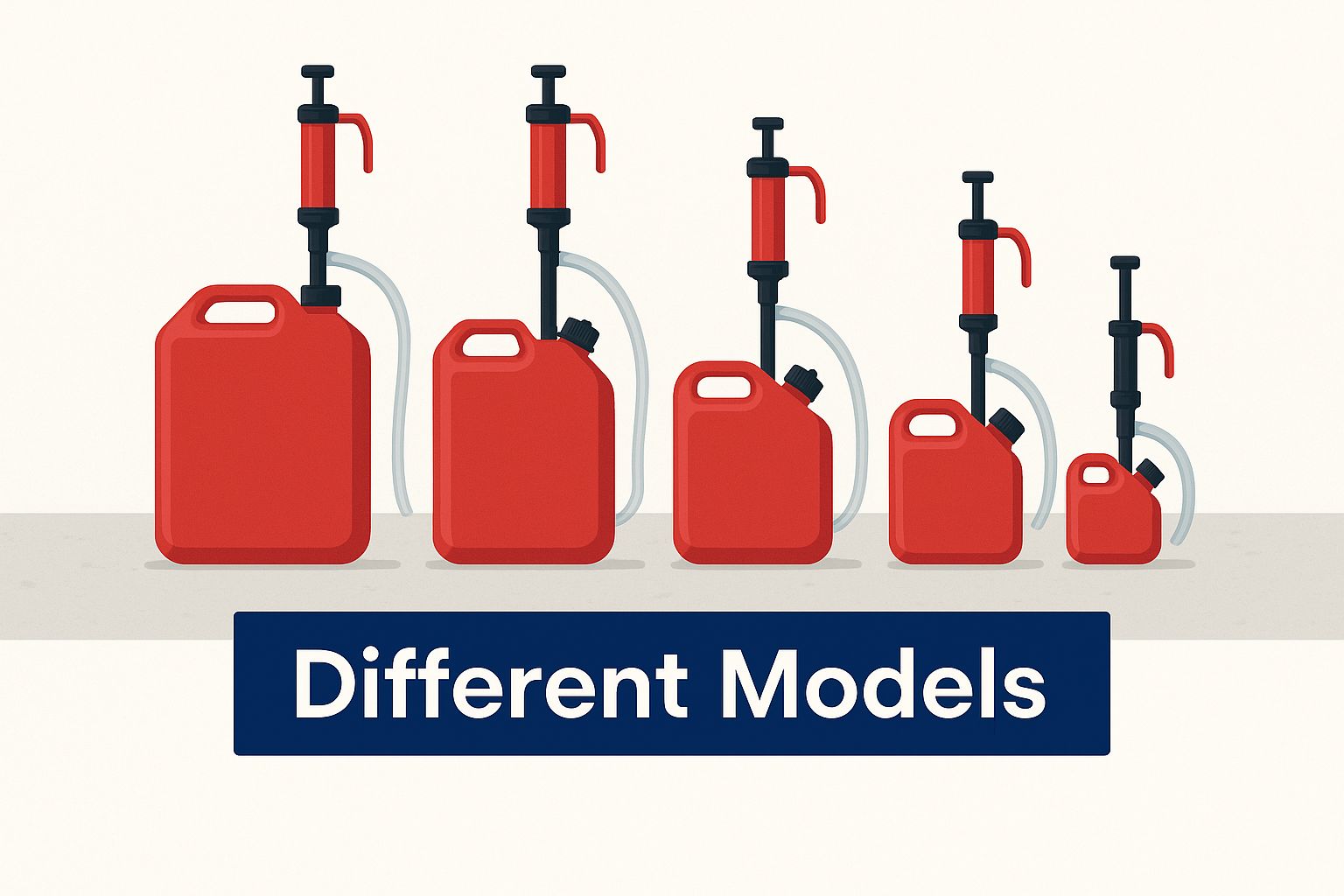
As the image shows, the pumps get more powerful and complex as you move from the basic manual designs to the more advanced electric systems.
12V Electric Pumps for Maximum Power
For boaters who need to move a lot of fuel and move it fast, the 12V electric pump is the king of the hill. These heavy-duty units hook right up to your boat's 12V battery, delivering a high-volume flow that can fill a big tank in just a few minutes. It's like having your own mini gas station right on the dock.
These systems are perfect for larger boats with big fuel tanks where a manual or battery-powered pump would just take too long. They pump fuel much faster, measured in gallons per minute (GPM), making them the quickest option you can get. This trend reflects a growing demand for better fueling solutions. In fact, the global market for fuel storage containers hit $28.6 billion in 2024 and is expected to climb to $47.3 billion by 2035, with portable cans leading the way.
By understanding the different pump mechanisms, you can better align your choice with your boat's specific needs, ensuring refueling is never a bottleneck. Choosing the right system isn't just about convenience—it's about matching the tool to the size and demands of your boat's fuel tanks.
Getting the right pump for your vessel is critical. To learn more about picking the right size and type, check out our guide on boat fuel tanks.
Here’s a quick comparison to help you sort it out:
| Pump Type | Power Source | Ideal Use Case | Key Advantage |
|---|---|---|---|
| Manual Siphon | Hand-powered | Small tenders, personal watercraft | Ultimate reliability, no power needed |
| Battery-Operated | Standard batteries (e.g., D-cell) | Mid-size boats, frequent top-offs | Push-button convenience, portable |
| 12V Electric | Boat's 12V battery | Large boats with high fuel capacity | Fastest flow rate, maximum power |
At the end of the day, the best gas can with a pump is the one that fits right into your boating routine, taking away the hassle and giving you peace of mind.
The Real-World Benefits of Upgrading Your Fuel Can
Let's be honest, refueling is one of the least glamorous parts of boating. But switching to a gas can with a pump isn't just about getting a slick new piece of gear—it's about completely changing how you handle this crucial task. The real payoff is in safety, convenience, and a whole lot less stress. These pumps solve the classic problems of refueling, turning a risky chore into a simple, controlled process.
The difference is night and day, and you'll feel it the very first time you use one. Forget wrestling with a heavy, sloshing can while the boat rocks beneath you. Instead, you just set the can down on a stable surface and let the pump do the hard work. This simple change brings three huge advantages that any boater will immediately appreciate.
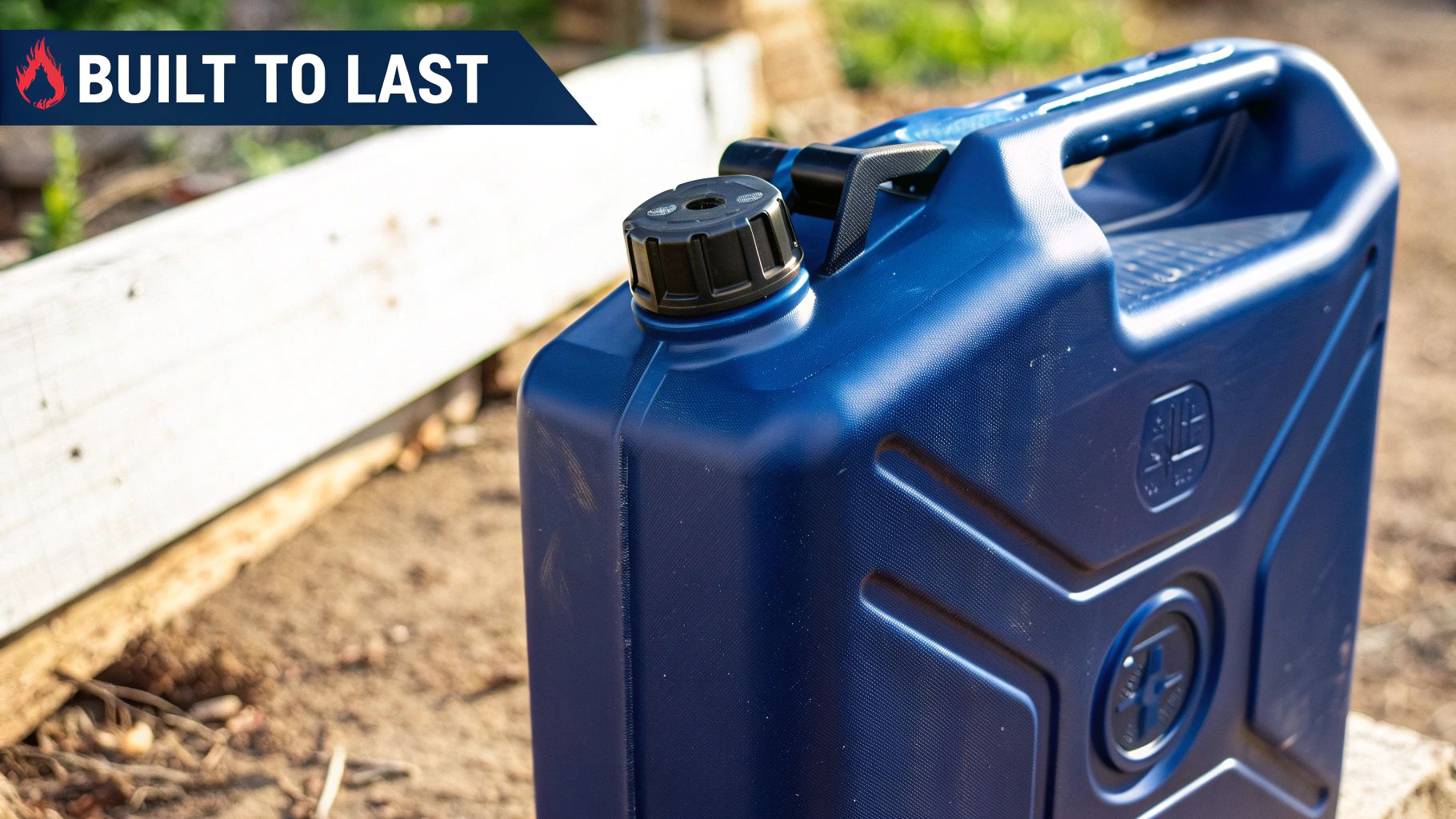
A Safer Day on and off the Water
Safety is, without a doubt, the number one reason boaters make the switch to a gas can with a pump. Think about the old way: you’re trying to hoist over 30 pounds of highly flammable liquid, often over an unsteady surface. That single action is just loaded with risk.
One unexpected wave or a slight loss of balance, and you’ve got a major spill. Gasoline on a hot boat deck is an obvious fire hazard, and fuel in the water is an environmental nightmare. Even if you avoid a spill, that repetitive strain from lifting and tilting heavy cans can lead to some nasty back and shoulder injuries over time.
A pump-equipped can pretty much eliminates these dangers.
- No More Heavy Lifting: The can stays put on the dock or deck. This gets rid of the main reason for spills and injuries.
- Controlled, Steady Flow: The pump gives you a predictable stream of fuel, so you can say goodbye to the "glugging" that causes messy overfills.
- Less Fume Exposure: The system is more sealed, meaning you breathe in fewer harmful gasoline vapors during the transfer.
This move toward safer fueling isn't just happening in the boating world. It's part of a much bigger trend. The global pumps market, valued at $62.33 billion in 2025, is expected to hit $92.15 billion by 2034. That growth is all about new tech making systems safer and more eco-friendly. You can dig into more details about this growing market over at Precedence Research.
Unmatched Convenience and Speed
Beyond the critical safety aspect, the sheer convenience of a pump is a total game-changer. Refueling goes from a dreaded, time-consuming hassle to a quick and easy job. This is especially true when you're dealing with those hard-to-reach fuel ports.
Ever tried to refuel a jet ski tied up to your boat, or reach a fuel inlet tucked into some awkward corner? A flexible hose and a pump make those scenarios a breeze. You can guide the nozzle exactly where it needs to go without twisting yourself into a pretzel or risking a spill.
For a boater, time on the water is precious. A gas can with a pump gives you that time back by making refueling faster, cleaner, and less stressful, letting you focus on the enjoyment of the day.
This convenience also means speed. Electric models, in particular, can transfer fuel way faster than just pouring from a can. A task that used to take several minutes of awkward, strenuous effort can now be done in a fraction of the time with the simple push of a button.
Better for the Environment
As boaters, we have a duty to protect the very water we love to be on. Fuel spills are a direct threat to marine life and water quality. Even those small drips and splashes add up, creating that ugly sheen on the water's surface that harms the entire aquatic ecosystem.
A gas can with a pump is one of the best tools you can have to prevent these accidental spills. By creating a secure, closed transfer from the can to your tank, you dramatically lower the risk of fuel ending up where it doesn't belong. Many models even include features like auto-stop nozzles that shut off the flow when the tank is full, giving you an extra layer of protection against overfills.
Ultimately, choosing a pump system is a simple, proactive step toward being a more responsible boater and helping to preserve our waterways for years to come.
How to Choose the Right Gas Can With a Pump
Picking the right gas can with a pump isn't something you want to rush. It’s about finding the right tool for your specific boat, ensuring every fill-up is quick, safe, and clean. Think of it like buying a fishing rod—you wouldn't use a light freshwater rod to haul in a marlin, and you shouldn't just grab any pump can for your boat.
The best choice boils down to a few key things: your boat's size, how you use it, and what you value most—speed, convenience, or simplicity. Let's walk through how to find the perfect fit.
Match the Capacity to Your Boat’s Needs
First things first, let's talk size. Gas cans with pumps usually come in sizes from 5 to 14 gallons. The right capacity for you depends entirely on your boat's fuel tank and how much you typically need to top it off. A can that’s too small is just a hassle, forcing multiple trips. On the other hand, one that's too big can be a pain to store and move around, even if you’re not lifting it to pour.
A good rule of thumb is to pick a can that holds between 25% to 50% of your boat’s main tank capacity. This gives you a solid amount of reserve fuel without weighing you down.
- Small boats, dinghies, or jet skis? A 5-gallon can is almost always perfect for a day out.
- Mid-sized fishing boats or pontoons? Stepping up to a 10- to 14-gallon model will give you a much more substantial reserve, letting you stay out longer.
Pro Tip: Don't forget to think about storage. Make sure you have a secure, well-ventilated spot for the can on your boat or dock, away from direct sunlight.
Knowing your boat's fuel system inside and out is crucial here. If you want to get a better handle on it, check out our complete boat fuel tank guide for a deeper dive.
Decide Between Manual and Electric Pumps
Next up is the pump itself. You're basically choosing between manual and electric, and each has its place. It all comes down to what you prefer: convenience, speed, or old-school reliability.
Manual Pumps are the workhorses. They’re dead simple and incredibly reliable because there are no batteries to die or wires to fail. The trade-off? You have to do the work, and they're a bit slower. They make a fantastic, budget-friendly primary option or a foolproof backup to keep on board.
Electric Pumps (either battery-operated or 12V) are all about push-button ease. They transfer fuel much faster and with zero effort, which is a game-changer if you refuel often or have a bigger tank. Just remember to keep the batteries charged or have a 12V power source handy.
Buyer's Quick-Reference Chart
Not sure which pump type is for you? This table breaks it down to help you find the best fit for your budget and needs.
| Pump Type | Ideal Use Case | Typical Flow Rate | Power Needs | Price Range |
|---|---|---|---|---|
| Manual Siphon | Small top-offs, backup pump | 1-2 GPM | Physical effort | $ |
| Battery-Operated | Frequent, easy refueling | 2-3 GPM | AA or D batteries | $$ |
| 12V Electric | Large tanks, fastest transfer | 4-5+ GPM | 12V outlet/battery | $$$ |
Ultimately, the chart shows a clear trade-off between cost and convenience. Manual is cheap and reliable, while electric offers speed for a higher price.
Consider the Flow Rate and Hose Length
Flow rate, measured in gallons per minute (GPM), tells you how fast the fuel will actually move. A higher GPM means you spend less time refueling and more time on the water. It’s that simple.
- Manual Siphon Pumps: Expect a flow rate around 1-2 GPM.
- Battery-Operated Pumps: These usually sit in the 2-3 GPM range.
- 12V Electric Pumps: The speed demons, often hitting 4-5 GPM or even more.
Don't overlook the hose length, either. A longer hose is a lifesaver, giving you the flexibility to set the can down in a stable spot on the dock and still easily reach your boat's fuel port. Look for a hose that's at least 6-10 feet long to avoid awkward stretching. A good, kink-resistant hose is also a must—it keeps the fuel flowing smoothly.
Finally, take a look at the can's construction. You want a tough, high-density polyethylene (HDPE) can that can handle the marine environment without breaking down. Put all these pieces together, and you’ll find a gas can with a pump that turns a chore into a simple, stress-free task.
How to Use and Maintain Your Pump Can for Safe, Reliable Fueling
Getting the right gas can with a pump is a great start, but like any good piece of gear, how you use and care for it makes all the difference. This isn't just about making the tool last longer; it's about staying safe every time you're at the dock or on the water. A little bit of routine care protects your investment and gives you the confidence that your equipment will work flawlessly when you need it.
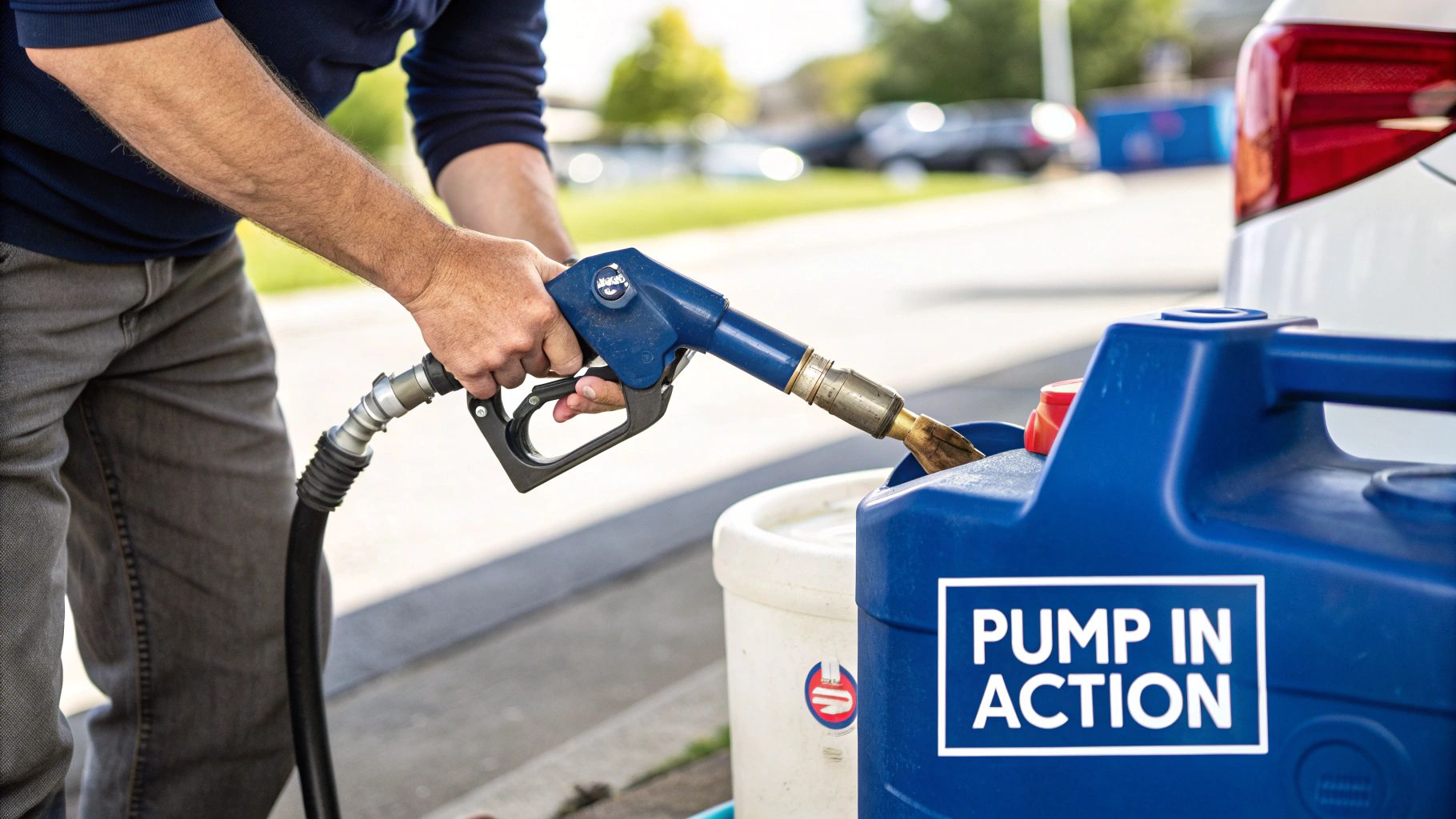
Think of it this way: you wouldn't leave the dock with a frayed line or a busted navigation light. Your fuel pump can is just as critical. Making sure it's in good working order should be a standard part of your pre-launch check, so you can avoid a frustrating—and potentially dangerous—failure.
Your Step-by-Step Guide to Safe Operation
Fueling your boat should be a calm, methodical process, never a race. Follow these simple steps every single time, and you'll create a safe routine that minimizes risk and keeps fuel where it belongs—in your tank.
-
Quick Pre-Use Inspection: Before anything else, give your pump a quick once-over. Is the hose firmly connected at both ends? Do you see any cracks or wear? For electric models, give the battery compartment a look to make sure the connections are clean and tight.
-
Get Stable: Place the gas can with a pump on a solid, flat surface. The dock is perfect, or a level part of your boat's deck. The key is stability. You never want to be holding the can while you're trying to pump.
-
Secure the Nozzle: Get the nozzle inserted firmly into your boat’s fuel port. A snug fit is crucial to prevent it from popping out and spraying gasoline everywhere. Many nozzles even have little clips or hooks to help keep them in place.
-
Watch the Flow: Start pumping and keep your eyes on the fuel level. Even if your pump has a fancy auto-stop feature, don't walk away. Paying attention is the best way to prevent an overfill, which is the number one cause of dangerous and messy spills. For a deeper dive into safe fueling habits, check out our complete guide to boat fueling safety.
Maintenance That Keeps Your Pump Running for Years
A little bit of upkeep goes a long way. These simple checks don't take much time but will ensure your pump is ready to go season after season.
A well-maintained fuel pump is a reliable one. Spending a few minutes on preventative care can save you from a major headache and costly repairs down the road, ensuring your gear is always ready for your next trip out.
This is more important than ever, as these handy tools are becoming incredibly popular. The global market for fuel transfer pumps was valued at $1.87 billion in 2024 and is expected to climb to $1.97 billion in 2025. It just goes to show how much people rely on safe, efficient fueling.
Your Simple Maintenance Checklist
Keep this checklist in mind, and you'll get years of service out of your pump can:
- Clean and Inspect Hoses: After you're done, wipe the hose down to get rid of any grime or fuel residue. Give it a good look for any cracks, leaks, or brittle spots, paying close attention to where it connects to the can and nozzle.
- Check the Filter: A lot of pumps have a small filter to screen out gunk. Check your manual to see where it is, and clean or replace it as needed. This keeps your flow rate steady and prevents clogs.
- Battery Care (for Electric Models): If your pump runs on batteries, take them out before you store it for the winter. This prevents corrosion. For 12V models, just make sure the electrical contacts are always clean and dry.
- Store It Right: Keep your gas can in a cool, dry, and well-ventilated spot. It should be out of direct sunlight and far away from anything that could create a spark. This protects both the fuel and the can itself.
Frequently Asked Questions
It's natural to have questions when you're thinking about adding a new piece of gear to your boating setup. When that gear involves something as crucial as fuel, you want to be completely sure you've got all the facts straight. We've gathered some of the most common questions boaters ask about gas cans with pumps to help you get the answers you need.
Getting a handle on these details will give you the confidence to use your equipment safely and make every trip to the dock a smooth one.
Are These Pump Cans Approved for Marine Use?
This is the big one, and for good reason. The short answer is yes, if they have the right certifications. Not just any can is cut out for the marine environment. To be considered safe and legal on the water, a portable fuel can needs to meet some pretty specific standards.
When you're shopping, keep an eye out for these labels:
- EPA (Environmental Protection Agency): This is the baseline. It means the can is designed to prevent fuel vapors from escaping into the atmosphere.
- CARB (California Air Resources Board): California has some of the toughest air quality rules in the country, so a CARB-compliant can often exceeds federal standards.
- USCG (United States Coast Guard): While the Coast Guard's regulations focus more on permanently installed tanks, any portable can you bring aboard should be tough enough to handle the rocking and rolling of a boat.
Think of these certifications as a stamp of approval. A compliant gas can with a pump isn't just a good idea—it's your best bet for staying safe, legal, and environmentally responsible. Always check the label.
Can I Use My Pump for Diesel or Other Fuels?
It's easy to assume a pump is a pump, but mixing fuel types is a dangerous game. Gas cans and their pumps are built with materials—like seals and gaskets—that are specifically chosen to handle the chemical makeup of either gasoline or diesel. They are not interchangeable.
If you use a gasoline pump for diesel, the diesel fuel can eat away at the seals, causing them to fail. That can lead to leaks, a busted pump, and a serious fire hazard. The bottom line is simple: always use a pump for the exact fuel it was designed for. If you carry both fuel types, you absolutely need two separate, clearly marked pump systems.
How Fast Do They Actually Pump Fuel?
Nobody wants to spend more time refueling than they have to. The speed of a pump, or its flow rate, can vary quite a bit from one model to the next, and it's usually measured in gallons per minute (GPM).
Here's a quick breakdown of what you can expect:
- Manual Siphon Pumps: These are the most basic and the slowest, typically clocking in around 1-2 GPM.
- Battery-Operated Pumps: A great middle-of-the-road option, these usually pump at a respectable 2-3 GPM.
- 12V Electric Pumps: When speed is the priority, these heavy-hitters connect to your boat's battery and can move fuel at 4-5 GPM or even faster.
To put that in perspective, topping off your 20-gallon tank with a 4 GPM pump would take just five minutes. With a 1 GPM manual pump, you'd be standing there for a full 20 minutes.
What if My Pump Stops Working?
If your pump decides to take an unscheduled break, don't panic. More often than not, it's something simple you can fix right on the spot. Before you assume the worst, run through a quick checklist. The two most common culprits are clogs and power issues.
First, take a look at the intake and the nozzle. Is there any debris blocking the works? For battery or 12V models, check your power source. Are the batteries fresh? Are the electrical contacts clean and free of any corrosion? A weak connection is often all it takes to stop a pump in its tracks. If a quick check doesn't solve it, your owner's manual is the next best place to look.
Ready to make fueling your boat simple and spill-free? CLiX Fueling Solutions offers the ultimate in safety and convenience, with an automatic shut-off feature that prevents dangerous overfills. Explore our innovative fueling systems today and experience a better way to refuel.

